What is Social Studies?
Typically, these 5 fields make up the K-12 Social Studies content area:
- History
- Geography
- Civics/Government
- Economics
- Culture
Here are some examples of what each encompasses:
History
Events, connection and importance of; Time and place; People, etc.
Geography
From own home, neighborhood, community, city, state, region, country, continent, global scale, etc.
Government
Own country (local, state, etc.) and others in the world, etc.
Economics
Finances; Management and use of resources (local to global); Production and distribution, etc.
Culture
Customs/ traditions; People, Food, Arts (music, fine arts, etc.), Housing, Dress, etc.
What is Science?
K-12 Science classes are typically seen as falling within 3 branches: Life, Physical, and Earth.
Elementary Years
typically focus on a basic overall view of Life, Physical, and Earth sciences. Totem supports both a broad study of each of these, or a deep look into areas of interest found within them. See lists below.
Middle School Years
typically focus on the same basic overall science courses of: Life, Physical, and Earth, and can usually add Space and Technology. With Totem, these years can also be a broad study or deeper interest led, as well as focus on any subcategory listed below.
High School Years
Life science typically becomes a Biology course. Physical and Earth Science courses are still official options. Some sources recommend taking these three courses in this order: 1. Biology, 2. Chemistry, 3 Psychics. There are also many other course options to choose from. See below.
With Totem, you do have the choice of still being interest led and using a variety of resources for science classes. Those would be listed on your ILP and transcripts as High School Basic Science or High School General Science. To get the specific course names like the below list, using a Canon/Curriculum is needed, or being enrolled in a course through a vendor. These all are readily available and accessible.
As you look at curriculum or parent design a course, here are some elements to consider including:
- Informational Text & Video
- Labs & Experiments
- Projects/Hands-on
- Scientific Method Us
Feel free to reach out to your contact teacher for help with brainstorming and planning!
For any grade level, as you are trying to determine your courses and focus, and choose your curriculum, class, or resources, use the table below to spark interest and help you brainstorm!
Life Sciences
- Biology is typically the main course.
Other common courses can include:
- Botany
- Ecology
- Marine Biology
- Neuroscience
- Paleontology
- Zoology
Physical Sciences
Main courses are typically:
- Chemistry
- Earth science
- Physics
Other common courses can include:
- Astronomy
- Astrology
- Astrophysics
- Forensic science
- Meteorology
- Space
Earth Sciences
Main courses are typically:
- Geology
- Environmental
Other common courses can include:
- Geophysics
- Oceanography
- Paleontology
Additional Sciences
Agricultural Sciences
Engineering and Technology
- Chemical
- Computer Science
- Geomatics engineering
- Mechanical engineering
Medical and Health science
- Anatomy & Physiology
- Biochemistry
- Cardiology
- Contemporary Health
- Food science
- Genetics
- Healthy Living
- Immunology
- Medicine
- Medicinal Herbs/Plants
- Microbiology
- Nutrition
- Outdoor Education
- Psychiatry
- Personal wellness
